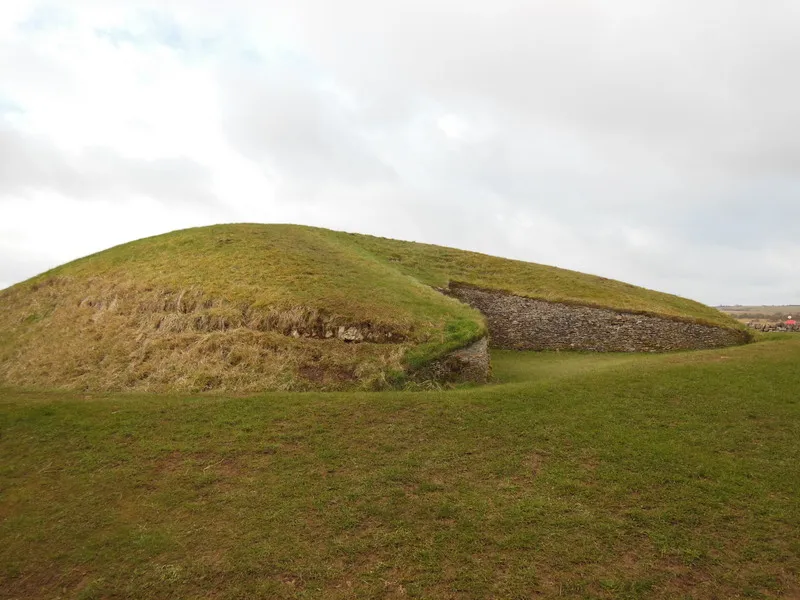Get your dose of History via Email
An Academic Examination of Belas Knap
The site of Belas Knap, located in the Cotswolds near Cheltenham in England, stands as an enduring testimony to prehistoric funerary practices. Identified as a long barrow chambered tomb, it is categorized within a broader class of Neolithic chamber tombs. Dating back to circa 3000 BC, Belas Knap serves as a significant archaeological site offering insight into the funerary customs of early agrarian societies on the British Isles.
Structural Composition and Archaeological Perspective
The long barrow at Belas Knap exhibits a trapezoidal shape, with a length measuring approximately 178 feet (54 m) and demonstrating the impressive earthen and stone architecture of its period. Possessing a distinctively false entrance — a characteristic of the local Cotswold-Severn architectural group — the site includes a series of burial chambers strategically placed along its periphery. These four chambers emanate from the sides and ends of the mound, each constructed of drystone walling and covered by large stone slabs referred to as capstones.
Excavations and Findings
Extensive archaeological excavations have played a pivotal role in unfolding the history of Belas Knap. The initial reports of diggings originate from the 19th century, and later systematic excavations were conducted by D. Brian and M.E. Burstow in 1963. These efforts have revealed artifacts including flint implements, skeletal remains, and pottery shards. The number and placement of the skeletal remains within the different chambers suggest that the tomb was used for collective burials, a practice common in Neolithic communal societies. Moreover, the subsequent analysis has provided evidence regarding the health, diet, and lifestyle of these ancient populations.
The discovery that the chambers had been subjected to robbery in antiquity foregrounds the importance of proper archaeological recovery and preservation. However, excavations have at times led to the displacement and reconstruction of structural elements of the site. This monumentalisation, as performed by early excavators in 1863–1865, focused on restoring the barrow to a perceived original form and thus has heavily influenced our current understanding and visual interpretation of the site.
Cultural Context and Interpretation
Belas Knap is situated within the rich cultural tapestry of Neolithic Britain, where long barrows served as a critical part of the landscape. The societal function of such a site extended beyond the mere interment of the deceased, intertwining with the spiritual beliefs and communal identity of its builders. Contemporary analysis stresses the significance of these barrows in creating sacred space and emphasizing territorial claims or bonds between communities and their ancestors.
The representation of Belas Knap in modern times is also worthy of scholarly attention. The site is currently cared for by English Heritage, acknowledging its cultural patrimony. Touristic interpretations and engagements with the site are balanced against the need for archaeological conservation. Belas Knap stands as a monument to public education regarding the United Kingdom’s Neolithic past as well as being an ongoing subject of archaeological interest and scholarship.
Conservation and Public Access
Reflecting a wider awareness of heritage management, conservation efforts at Belas Knap have been spearheaded to ensure its integrity for future generations. The site is legally protected as a Scheduled Ancient Monument, highlighting its national historical significance. Public accessibility has been a cornerstone of its preservation strategy, with managed pathways and interpretive signage fostering a conducive environment for learning and exploration. As a result, Belas Knap not only remains an object of academic curiosity but also a space into which the public is invited to ponder the legacies of Britain’s ancient history.
Conclusion
The enduring narrative of Belas Knap as a prehistoric long barrow is continually shaped through ongoing investigative efforts into its archaeological, cultural, and environmental dimensions. As a subject of scholarly research, it raises intriguing questions regarding the social and ritualistic practices of Neolithic communities in the Cotswolds and provides a crucial touchstone for understanding the development of early British society.
Sources: Wikipedia

